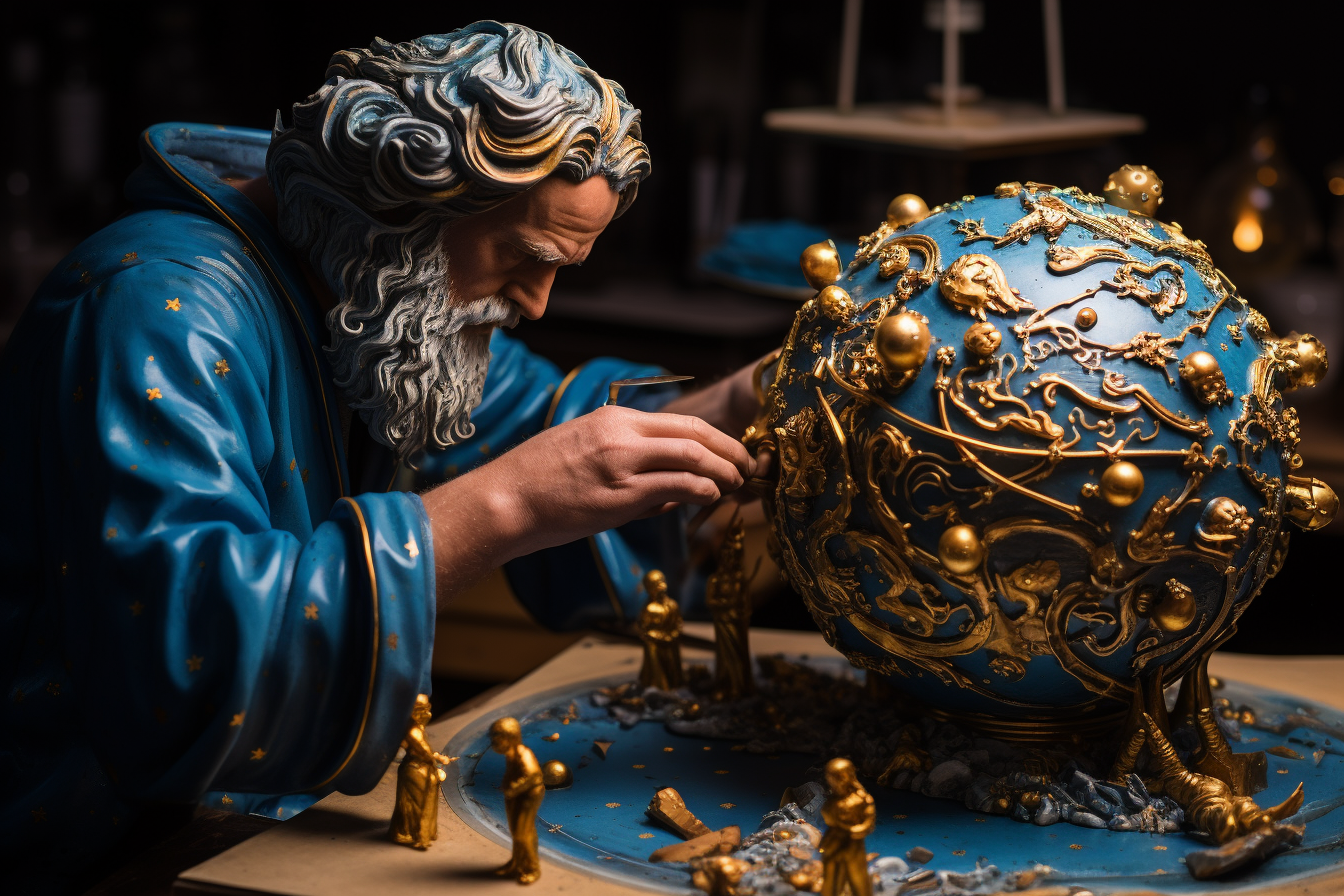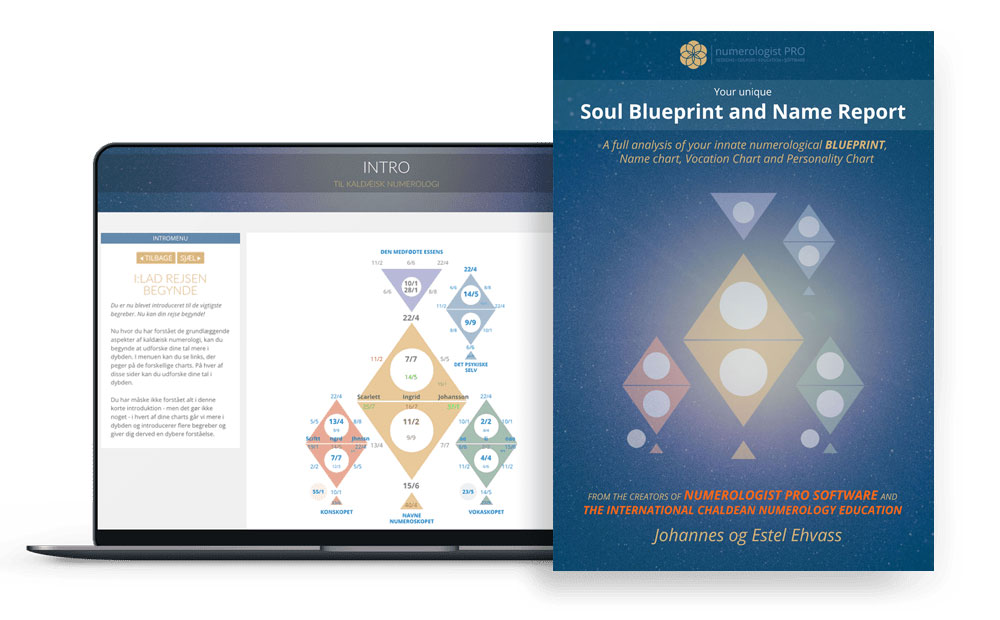Astrology and Art: Celestial Imagery in the Renaissance

Estel Ehvass
Welcome, dear reader! The Renaissance marked a pivotal time for many disciplines, and astrology was no exception. As society rekindled its passion for the arts and sciences, so too did it revisit the stars. This era, renowned for its rebirth of knowledge, saw astrology intertwine with emerging scientific studies and the broader awakening of human curiosity. The cosmos, during this period, served not just as a guide for destinies, but also as a testament to humanity's relentless pursuit of understanding. Dive with me into this intriguing era, where stars and society found renewed harmony.
Astrological Themes in Painting and Sculpture
Introduction

During the Renaissance, a period marked by renewed interest in the classical knowledge of the Greeks and Romans, art experienced a profound transformation. This era, characterized by rapid advancements in various fields, also witnessed a significant interplay between astrology and art. The celestial and the terrestrial merged in myriad ways, leaving an indelible imprint on the art forms of the time. This exploration seeks to delve into the profound astrological themes present in the paintings and sculptures of the Renaissance.
The Confluence of Sacred and Celestial
Depicting The Planets
Renaissance artists, fueled by the prevailing astrological beliefs, frequently incorporated planetary symbols in their works. Venus, the goddess of love, was portrayed as the planet of beauty and harmony, influencing artists to paint scenes of love and romance under her guiding star. Mars, on the other hand, embodied war and conflict, leading to artworks filled with martial undertones.
Zodiacal Representations
The Zodiac, a celestial belt containing the paths of the primary celestial bodies, held significant allure. Each sign, with its unique symbolism, found representation in both sculpture and painting. Whether it was the fiery Aries, the balanced Libra, or the enigmatic Scorpio, artists sought to capture the essence of these signs in their creations.
The Resurgence of Mythology
Reviving Classical Tales
The Renaissance period saw a renewed interest in classical mythology. Astrological tales, intertwined with these myths, came alive on canvas and stone. The tale of Jupiter disguising himself to woo his lovers or Mercury’s cunning and wit became popular themes, each carrying astrological connotations.
The Power of Allegory
Artists employed allegory to convey deeper meanings. For instance, Saturn, representing time, was often depicted as an old man with a scythe, a poignant reminder of the inexorable march of time. Similarly, the Moon, reflecting the cyclical nature of life, was portrayed in its various phases, symbolizing change and transition.
Artistic Techniques and Astrological Symbolism
Use of Light and Shadow
The interplay of light and shadow became a potent tool to symbolize the dance of celestial bodies. Moonlit nights, sunlit days, and the mystique of eclipses were rendered with stunning realism, creating atmospheres that mirrored astrological beliefs.
Positioning and Perspective
The placement of celestial symbols in a painting or sculpture often denoted their astrological significance. A planet or zodiac sign placed centrally might indicate its primary influence, while those in the periphery could signify secondary or more subtle effects.
Iconic Works and Their Astrological Themes
Botticelli’s “The Birth of Venus”
Perhaps one of the most iconic paintings of the Renaissance, “The Birth of Venus” by Sandro Botticelli, is a vivid portrayal of the planet Venus. This masterpiece not only captures the beauty of the goddess but also her astrological significance as the harbinger of love and beauty.
Leonardo da Vinci’s “The Last Supper”
While primarily a biblical scene, da Vinci’s “The Last Supper” also contains astrological undertones. The twelve apostles are thought by some scholars to represent the twelve zodiac signs, each reacting differently to the revelation of the betrayer in their midst.
Michelangelo’s Sculptures
Michelangelo’s sculptures, especially those in the Medici Chapel, carry strong astrological themes. The tombs of the Medici dukes are flanked by sculptures representing day and night, dawn and dusk, emphasizing the cyclical nature of time – a core astrological concept.
Conclusion
The Renaissance was more than just a period of artistic revival; it was a symphony where various disciplines, including astrology, played their parts harmoniously. Astrological themes in painting and sculpture from this era are testament to the intricate tapestry of beliefs, knowledge, and creativity that characterized the time. Through their brushes and chisels, artists of the Renaissance immortalized the celestial dance, reminding us of the eternal connection between the cosmos and art.
Symbolism, Allegory, and the Zodiac in Artistic Works
Introduction
The confluence of astrology and Renaissance art is not limited to the overt representation of celestial bodies and zodiac signs. Symbolism and allegory played a critical role in conveying complex astrological concepts in a visually captivating manner. By employing a rich tapestry of symbols and metaphors, artists painted vivid narratives, intertwining human experiences with the cosmos.
Decoding Symbolism in Renaissance Art
Elements and Their Celestial Counterparts
The four classical elements – fire, water, air, and earth – were intricately linked to astrological signs. Artists often depicted these elements in scenes laden with astrological meaning. For instance, a scene with turbulent waters might subtly hint at the influence of the water signs – Cancer, Scorpio, and Pisces.
Animals as Astrological Symbols
Certain animals were synonymous with zodiac signs. The majestic lion represented Leo, the bull stood for Taurus, while the agile and swift-footed ram was symbolic of Aries. These animals were not just mere representations; they encapsulated the qualities of their corresponding zodiac signs. For example, the presence of a lion in a painting could symbolize bravery, leadership, and regal disposition, characteristics attributed to Leos.
Floral and Botanical Symbolism
Apart from animals, plants too played a role in astrological symbolism. Roses, with their intricate layers and thorns, were linked with Venus and the sign of Libra, representing beauty with an underlying hint of danger. The resilient and sturdy oak tree, meanwhile, symbolized Taurus’s steadfastness.
The Art of Allegory
Allegorical Figures
Renaissance artists often personified abstract concepts, turning them into tangible figures. Concepts like Fortune, Time, and Fate were rendered as beings influencing human destiny, much like planets in astrological beliefs. The Wheel of Fortune, a recurring allegorical theme, represented the cyclical nature of fate, mirroring the cyclical movements of celestial bodies.
Mythological Narratives
Mythology provided a rich repository of stories that artists drew upon to convey astrological ideas. The tale of Phaeton, who recklessly drove the sun chariot across the sky, served as a cautionary tale about the consequences of tampering with the natural order, reflecting the importance of planetary movements in astrology.
Scenes of Duality
Duality is a core principle in astrology, with the zodiac divided into positive (masculine) and negative (feminine) signs. Artworks showcased this duality through contrasts – day and night, light and darkness, or sun and moon. This emphasized the yin-yang nature of existence, mirroring astrological beliefs about balance and harmony.
Zodiac Signs and Their Visual Representation
Characteristics in Portraiture
Renaissance portraits often contained subtle nods to the subject’s zodiac sign. A person with a dreamy expression and fluid, watery surroundings might be hinting at the sign of Pisces. Similarly, a portrait showcasing a person amid luxuries and comforts could be a nod to the indulgent Taurus.
Astronomical Instruments in Art
Astrolabes, quadrants, and armillary spheres were not just tools for astronomers and astrologers; they found their way into artworks as symbols of knowledge, destiny, and the interconnectedness of the cosmos and earth.
Seasonal Changes and Zodiac Cycles
The changing seasons, symbolized by various activities like harvests or hunts, were often aligned with zodiac cycles. Winter scenes, with their snow and dormancy, were linked to the signs of Capricorn and Aquarius, while spring, bursting with life, related to Aries and Taurus.
Notable Artworks and Their Allegories
Raphael’s “School of Athens”
On the surface, “The School of Athens” celebrates philosophers. However, a closer look reveals astrological symbols. Ptolemy, holding a globe, represents the celestial, while Heraclitus, with his brooding pose, embodies the contemplative nature of Scorpio.
Albrecht Dürer’s “Melencolia I”
This intricate engraving is laden with symbols. The magic square, the melancholic angel, and the comet in the sky are all believed to contain astrological connotations, highlighting the mysterious and uncertain nature of life.
Titian’s “Bacchus and Ariadne”
Here, Ariadne’s crown is turned into the constellation Corona Borealis. The painting, replete with mythological characters, is a testament to the union of celestial bodies and earthly events.
Conclusion
Symbolism and allegory in the Renaissance were not mere artistic techniques; they were bridges connecting the tangible with the ethereal. The art of this period, teeming with celestial imagery and zodiacal symbols, serves as a beautiful testament to humanity’s timeless fascination with the stars and the stories they tell. Through allegory, artists of the era crafted visual poems, singing praises of the cosmic dance that influences life on Earth.
Patronage and Art: How Astrology Influenced Renaissance Aesthetics
Introduction
Art, throughout history, has rarely existed in isolation. It often finds its vitality and direction from the society, culture, and more prominently, from the influential patrons who fund it. During the Renaissance, a renewed interest in astrology among the elite profoundly shaped the art they commissioned. Their patronage ensured that the celestial was grounded on the terrestrial canvas, bridging the heavens with the human realm.
The Powerful Patrons of the Renaissance
The Medici Family
Florence’s Medici family, one of the most influential patrons of the Renaissance, had a strong fascination with astrology. Their emblem of balls on a gold field was rumored to represent planets. Cosimo de’ Medici, the patriarch, regularly consulted astrologers, guiding not only his personal decisions but also his political maneuvers. The art commissioned by the Medicis often contained astrological references, ensuring artists integrated celestial symbols to please their patrons.
Popes and Astrology
Though the Church had a contentious relationship with astrology, several popes had personal astrologers. Pope Julius II, for instance, relied on astrological advice to determine the date for laying the cornerstone of St. Peter’s Basilica. Consequently, the Vatican, as a major patron, influenced the inclusion of astrological motifs in religious artworks.
The Este and Gonzaga Families
In Northern Italy, the Este family in Ferrara and the Gonzaga family in Mantua were renowned patrons who held court astrologers. Their palaces boasted frescoes and artworks interwoven with astrological imagery, reflecting their belief in the stars’ influence over fate.
The Melding of Personal Horoscopes with Art
Birth Charts as Art Themes
It wasn’t uncommon for patrons to request artists to incorporate their personal birth charts or astrological signs into commissioned works. Such pieces served dual purposes – as a display of their power and prestige, and as talismans believed to offer protection or amplify positive celestial influences.
Natal Themes in Portraiture
Portraits, especially of the elite, often included subtle celestial symbols that alluded to their zodiac signs or planetary alignments. These elements provided insights into the subject’s character, aspirations, or the astrological conditions at their birth.
Astrological Motifs in Daily Life
Astrology wasn’t limited to grand frescoes or portraits; it permeated daily life. Household items, like dishes and tapestries, commissioned by the elite often bore zodiac symbols or planetary alignments, echoing their owners’ astrological beliefs.
Commissioned Astrological Landscapes
Celestial Events as Central Themes
Artworks depicting significant celestial events, such as comets, eclipses, or planetary conjunctions, were in vogue. These were not just aesthetic pursuits but also chronicled important astrological occurrences believed to herald change.
The Interplay of Heaven and Earth
Landscape paintings often mirrored the interplay between terrestrial events and celestial influences. The positioning of stars, the phase of the moon, or the visible planets in the sky could hint at the underlying astrological theme or the message the patron wished to convey.
Architectural Marvels and Astrology
Astrological Alignment in Building
Patronage wasn’t limited to paintings or sculptures. Astrology significantly influenced architecture. Buildings, especially those commissioned by influential patrons, often had astrological alignments. Their placements, designs, or the times of their inaugurations were sometimes determined based on astrological considerations.
The Celestial Vault: Frescoes and Domes
The domes of significant buildings, such as palaces or churches, were often adorned with celestial motifs. They mirrored the heavens, with stars, zodiac symbols, and planetary bodies, turning the architectural space into a reflection of the cosmic realm.
Statues and Fountains
Public squares or gardens commissioned by the elite often showcased statues with astrological motifs. Fountains, especially, depicted zodiac signs or planetary gods, with water – the source of life – underscoring the nourishing influence of the heavens.
Conclusion
The intertwining of patronage and astrology during the Renaissance was more than a testament to the period’s fascination with the stars. It was a profound statement on the human need to find one’s place in the vast cosmos. The art and architecture, suffused with astrological symbolism, served as a constant reminder of the delicate dance between destiny and free will. They echoed the Renaissance spirit – an era of rebirth, discovery, and a fervent desire to harmonize the terrestrial with the celestial.

Johannes & Estel: Renowned authorities in Numerology, Astrology, and the esoteric arts. As the founders of Scandinavia's premier Numerology school, we're delighted to share our insights through this curated series on astrology. Dive in and discover the stars.
The Worlds Most Advanced Numerology Report

Your birthdate reveals your unique life purpose, potentials, talents, weaknesses, and karma in this life.
Your names show what you attract into your life regarding your career, relationships, happiness, money, and success.
GET THE REPORT HERE
Introduction to Astrology
The history of Astrology
Moving beyond deterministic astrology
Foundation of Astrology: Planets, Signs and Houses
Astrology and the Holographic Universe
The Holographic Universe
The Human Psyche as a Mirror to The Solar System
The Human Body as a Mirror to The Star Signs
Astrology Background
Egyptian Astrology
Mayan Astrology
Chinese Astrology
Indian Astrology - Jyotish
Celtic Astrology
Tibetan Astrology
Mesopotamian Astrology
Early Mesopotamian Astrology: The Dawn of Celestial Divination
Enuma Anu Enlil: The Epicenter of Babylonian Celestial Omen Interpretation
Babylonian and Chaldean Astrology
Babylonian and Chaldean Astrology
Chaldean influence and evolution
Chaldean Wisdom: Safeguarding and Transmitting Astrological Knowledge
Hellenistic Astrology
Hellenistic Astrology background
Claudius Ptolemy and Tetrabiblos
Vettius Valens
Dorotheus of Sidon
Persian Astrology
Persian Astrology background
Sassanian Astrology
Late Antiquity and The Transition Period
Late Antiquity and The Transition Period
Hellenistic to Islamic Transition: The Torchbearers of Astrological Wisdom
Islamic Golden Age
Arabian Astrology Background
Arabian Astrology Contributions
Medieval Astrology
Introduction: The Medieval Cosmos
Monastic Preservers: Astrological Knowledge in the Dark Ages
Astrology in Medieval Medicine
Kings, Queens, and Constellations: Astrology in the Medieval Court
The Church and the Stars: A Contentious Relationship
Universities and Scholastic Pursuits: Academic Astrology
Astronomy & Astrology: Tools of the Trade
Medieval Astrological Houses and the Synthesis of Traditions
Transition to the Renaissance: Humanism and the Celestial Arts
Reflections: Medieval Astrology's Echoes in Modern Practice
Astrological Art of the Middle Ages
Famous Medieval Astrologers
Medieval Astrological Texts
Renaissance Astrology
Renaissance Humanism and Astrology
Scientific Advancements and Astrology
The Social Fabric: Astrology in Everyday Renaissance Life
Court Astrologers of the Renaissance
Controversies and Conflicts: Astrology Under Scrutiny
Renaissance Texts and Authors: Continuation of a Tradition
Astrology and Art: Celestial Imagery in the Renaissance
Renaissance Astrological Practices: Evolutions and Innovations
End of the Renaissance: The Gradual Decline of Astrological Influence
Renaissance Astrology's Echo in the Modern World
Enlightenment Astrology
Introduction: The Enlightenment and Astrology
Challenging the Stars: Astrology's Critics during the Enlightenment
Astrology and the New World
Astrology in the 19th Century
The Dawn of Psychological Astrology
Astrology in the 20th Century: A Modern Renaissance
Astrological Associations and Schools
Modern Controversies and Astrology
Astrology and Popular Culture
Astrology and Technology
Current Trends and Future Directions in Astrology
Conclusion: Reflecting on Astrology's Evolution
The Planet Significances
The Sun in Astrology
The Moon in Astrology
Mercury in Astrology
Venus in Astrology
Mars in Astrology
Jupiter in Astrology
Saturn in Astrology
Uranus in Astrology
Neptune in Astrology
Pluto in Astrology
Chiron in Astrology
Black Moon Lilith in Astrology
Pars Fortuna in Astrology
Ceres in Astrology
Houses in Astrology
Introduction to Astrological Houses
The Angular Houses
The Succedent Houses
The Cadent Houses
The 1st House
The 2nd House
The 3rd House
The 4th House
The 5th House
The 6th House
The 7th House
The 8th House
The 9th House
The 10th House
The 11th House
The 12th House
Interaction Between Houses
Derived Houses, House Rulers, and Interceptions
Conclusion: Synthesizing House Knowledge
All Materials © 2023 & 2024 Numerologist PRO
Terms of Service: Information provided by Numerologist PRO and/or from this web site is not intended as advice (medical, psychological, financial or other), nor is it intended to replace your work with a qualified professional (medical or otherwise). You should maintain your relationship with your providers and consider the services of this site as informational only. Any information, stories, examples, or testimonials presented on this website do not constitute a warranty, guarantee, or prediction regarding the outcome of an individual. This web site is a sharing of knowledge and information of numerology/energy work based on the experiences of Numerologist PRO. You are encouraged to make your own decisions based on your own research and inner guidance. By booking and receiving services, you agree to fully release and hold harmless Numerologist PRO and all it's affiliated numerologists from and against any liability or claim that may arise out of or in connection with their service(s).
Numerologist PRO © 2021

CONTACT
numerologist@numerologistpro.com
LIKE US, and get free numerology tools, info about your personal numbers, best business dates of the year - and more!
YOUR FREE NUMEROSCOPE CHART
Enter your name and email below and get access to our free online numerology chart tool.